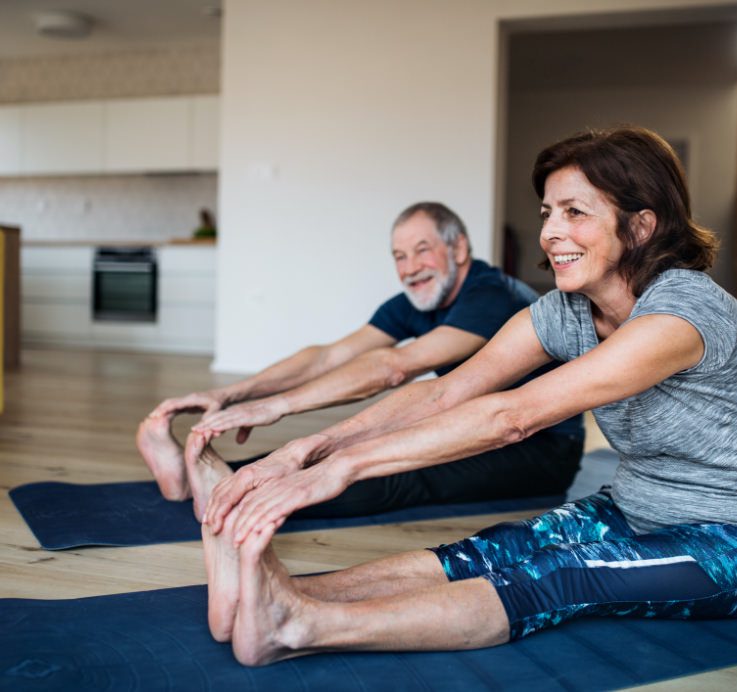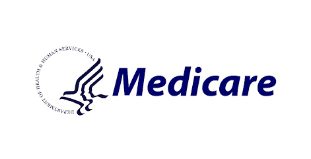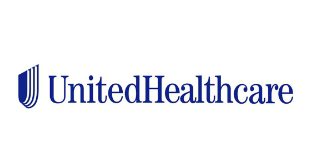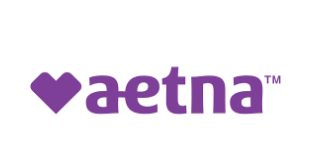Varicose veins can form anywhere on the legs from the groin to the ankle. However, most varicose veins form on the inside of the thighs and legs and on the back of the calves. The symptoms of vein disease can often be misdiagnosed without further testing. Untreated chronic vein disease can lead to more advanced signs and complications such as thickened skin, infections, bleeding, and ulcerations. Chronic Venous Insufficiency (CVI) is another name for venous disease and occurs when the valves in your leg veins fail to close tightly and allow blood to pool in your legs. Although usually not life threatening, CVI can result in significant medical complications. Deep Vein Thrombosis (DVT) is the most serious medical condition that can result from untreated vein disease. It occurs when a blood clot forms in a varicose vein and extends to one or more of the deep veins inside the muscles of the leg or thigh. DVT can lead to life-threatening pulmonary embolism (blood clots in the lungs) and must be treated promptly to prevent the potentially fatal complication of pulmonary embolism.
Leg Vein Treatments
Signs and Symptoms of Vein Disease
Fortunately, the signs and symptoms of vein disease are often reversible through state-of-the-art leg vein treatment. These leg vein treatment procedures use minimally invasive techniques available at Vein Specialists. Do you have concerns about bulging veins or pain in your legs? Simply schedule a new patient consult with Vein Specialists in Fort Myers or Bonita Springs. You may be a candidate for leg vein treatment. Common signs and symptoms of vein disease to look for include:
- Extensive Spider Veins and Bulging Varicose Veins
- Swollen & Achy Legs or Ankles
- Fatigued Legs
- Nighttime Leg Cramps & Charley Horses
- Burning or Throbbing Legs
- Discolored Skin Around the Veins
- Inflamed or Itchy Skin
- Bleeding Veins
- Leg Ulcers
Common Causes of Visible Leg Veins
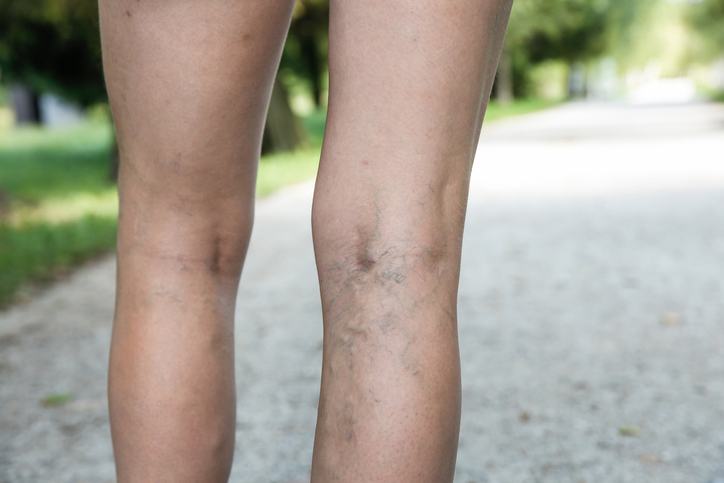
Varicose veins and spider veins are two of the most common presentations of venous disease. Varicose veins most commonly occur in the legs. They are larger than spider veins and appear as swollen, blue and purple ropey veins that protrude above the surface of the skin. Spider veins are smaller and often appear as a network of red and purple spider web like marks on the leg. Although usually not painful, spider veins can become quite noticeable and, in some cases, actually bleed. For this reason, they can be treated for cosmetic reasons or may be a sign of underlying venous disease when present below the knee. In fact, leg vein treatments are highly effective for both spider veins and varicose veins.
What causes these types of veins to be more visible on the legs? Here are the common causes of visible leg veins such as varicose veins and spider veins:
Heredity is the main cause of visible leg veins. In fact, your risk of venous disease increases dramatically if a close family member has had the condition. If a parent has varicose veins, you have an approximately 40 percent chance of getting them.
Pregnancy is one of the major risk factors for visible leg veins. Pregnancy increases the total blood volume in the veins. In addition, the risk of developing varicose veins increases with each subsequent pregnancy. The most severe venous changes tend to occur during the third trimester of pregnancy as the fetus grows in the uterus and causes additional compression of the pelvic veins.
Studies have shown that the risk of vein disease increases with age. In fact, varicose veins tend to first appear between the ages of 30 to 60 and worsen as you age. More than half of women over the age of 65 have varicose veins. However, it should be noted that venous disease can occur among teens and young adults as well.
Does your job involves prolonged periods of sitting or standing? Teaching, nursing, retail sales, office desk jobs, and similar occupations are good examples of professions with higher risk of CVI which can lead to visible leg veins. Cosmetologists and pharmacists also have an increased risk of developing vein disorders.
Being overweight and/or not getting sufficient exercise serves as a risk factor for varicose veins. When people carry excess weight, they have more pressure in their pelvis and on their veins. Weight fluctuations can also lead to venous disease. Physical activity can help people with venous disease by keeping the blood flowing as it should.
Many birth control pills contain the hormones estrogen and progestin. Therefore, they may lead to an increased chance of varicose veins, CVI, and DVT. The hormones weaken the vein valves in these women using birth control pills.
Believe it or not, even healthy athletes can get vein disease. They can also suffer from other forms of venous disease. As a matter of fact, certain sports activities can increase your risk of varicose veins such as those which cause increased abdominal wall pressure like weightlifting and running.
Leg Vein Treatment Options for Vein Diseases
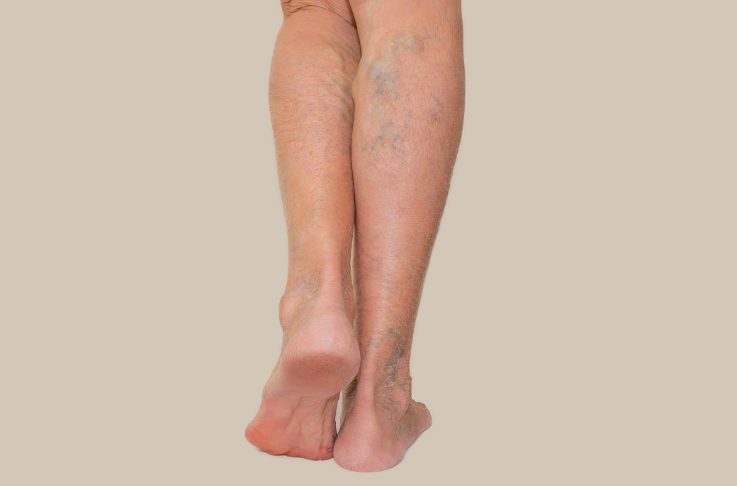
Leg vein treatment has become much more advanced over the past several years. These minimally invasive approaches significantly reduce recovery time. For example, Vein Specialists of Fort Myers and Bonita Springs offer a variety of leg vein treatment options. We are Florida’s leading Vein Specialists and treat the full spectrum of venous disease for patients in Southwest Florida. These range from varicose veins and spider, leg swelling, stasis dermatitis, and venous ulcers. We specialize in the following leg vein treatment procedures:
Endovenous Ablation is a minimally invasive outpatient procedure. It uses heat to treat the underlying cause of the varicose veins. It is one of the most common procedures for leg vein treatment. The procedure uses either LASER energy or radiofrequency energy. Endovenous Ablation seals abnormal leaking veins with heat rather than stripping the veins out of the leg, like in the old days, prior to the year 2000. Benefits of the Endovenous Ablation procedure include no incisions, minimal or no pain, and minimal scarring. It is a highly effective treatment performed at Vein Specialists.
An effective outpatient procedure, Microphlebectomy is the most common surgical procedure for treating varicose veins. It involves the removal of bulging varicose veins through the use of very small incisions. Microphlebectomy takes approximately 30 minutes to perform under local anesthesia. Dr. Magnant often performs this procedure in conjunction with the Endovenous Ablation leg vein treatment.
Injection Sclerotherapy is ideal for patients suffering from varicose veins and spider veins. It offers a noninvasive but very effective outpatient solution to cosmetic spider veins and small varicose veins. Other benefits include minimal discomfort and the healing of diseased veins in a shorter period. Injection Sclerotherapy may eliminate the pain and discomfort caused by varicose veins, spider veins, and other venous diseases.
A minimally invasive procedure, VenaSeal simply closes diseased veins through the use of a safe medical adhesive. It helps to improve vein diseases and their symptoms by reducing the venous pooling in the leg veins and rerouting blood to other healthy veins. An added benefit is fast recovery time. In fact, you will enjoy a swift return to regular activities after undergoing VenaSeal Vein Treatment at Vein Specialists.
This is a foam sclerosant (solution) used to treat varicose veins or leftover vein segments below the knee.
Intravascular Ultrasound (IVUS) allows for the examination of pelvic veins from within to check for obstructions. It uses a specially designed ultrasound catheter which enables the precise location and measurement of the severity of the vein narrowing. IVUS is an outpatient procedure performed at Vein Specialists to help patients with pelvic congestion syndrome, pelvic pain, and recurrent vein disease. IVUS directed stent placement restores normal pelvic vein flow.
Fast and reliable, the VeinGogh procedure is best suited for the treatment of facial and nasal spider veins and causes much less discomfort than older nasal and facial spider vein therapies. VeinGogh is also effective for the treatment of other vascular lesions like, cherry angiomas (red freckles) and small skin tags.
Benefits of a Leg Vein Treatment
Painful legs and bulging veins are the most common signs of venous disease. Fortunately, new state-of-the-art, minimally invasive leg vein treatments at Vein Specialists make the procedure easier than ever. Explore all the benefits of a leg vein treatment and schedule your new patient appointment with Vein Specialists today:
- Experience Less Leg Pain: Eliminate leg pain with leg vein treatment. Get back to your regular routine in no time. Leg vein treatment will help you alleviate the uncomfortable symptoms of vein disease. You will achieve renewed vigor and improved well-being after undergoing these advanced procedures.
- Feel Better About Your Appearance: Leg vein treatment can boost your self-confidence. For instance, after getting rid of those ugly, bulging veins you will be able to wear whatever you want again without worrying about hiding your varicose veins from others.
- Enjoy Increased Mobility: The swelling caused by varicose veins and vein disease often inhibits normal movement. The discomfort can interfere with on your daily routine. By reducing leg swelling, leg vein treatment will help improve your overall mobility by reducing leg swelling and the associated leg discomfort. You can look forward to enjoying a more active lifestyle after undergoing leg vein treatment.
Before and After
Why Choose Vein Specialists?
At our Vein Specialists locations in Fort Myers or Bonita Springs, we use the latest ultrasound equipment. This allows us to get an inside look at the performance of your vascular system. Our experienced team of registered vascular sonographers will perform a comprehensive venous ultrasound on your legs. They pay close attention to every detail to determine if the cause of your swelling is vein related. Based on the outcome of your comprehensive ultrasound, our team will help you decide on the best-swollen leg treatment. We will do our best to get you on the road to healthier-feeling legs.
- Over 30 Years of Experience as a Vascular Surgeon
- Member of the Society of Vascular Surgery
- Member of the American Vascular Lymphatic Surgery
- Member of the Alpha Omega Alpha Medical Honor Society
- Fellow of the American College of Surgeons
- Board Certified by the American Board of Surgery in Vascular Surgery
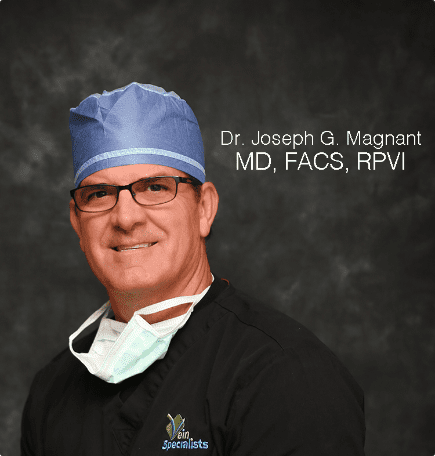
Frequently Asked Questions
Patients often have many questions when it comes to leg vein treatments. The following FAQs will help you understand more about the symptoms and advanced venous disease treatments available today. Here are some of the most commonly asked questions related to leg vein treatment:
What are varicose veins?
Varicose veins are abnormally enlarged superficial veins usually seen in the thigh and leg. In many patients they are a sign of a more serious underlying problem of the venous system.
What will happen if I leave varicose veins alone?
Without treatment, varicose veins worsen with time. Book an appointment today and discover the innovative varicose vein treatment options available at Vein Specialists.
What are the symptoms of varicose veins and vein insufficiency?
Varicose veins and venous insufficiency may cause symptoms less obvious than the commonly noted spider veins, bulging lumps, bleeding veins, or leg ulcers. Other symptoms may include swollen and achy legs, a feeling of heaviness or fatigue of the legs, or itchy and discolored legs.
How can venous insufficiency be diagnosed?
Aside from the obvious signs of external varicose veins found at physical examination, the most accurate method of diagnosing underlying venous insufficiency is duplex ultrasound. When performed by a qualified registered vascular technologist, one can precisely determine the location of the leaky veins and formulate a logical and effective treatment plan to cure the problem.
Success By the Numbers
28,000+
200+
2
7
What Our Patients Say
Office Hours
Mon 8:00 AM – 5:00 PM
Tue 8:00 AM – 5:00 PM
Wed 8:00 AM – 5:00 PM
Thu 8:00 AM – 5:00 PM
Fri 8:00 AM – 5:00 PM
Phone
(239) 694-8346
Fax
(239) 936-6272
Let's Get in Touch
Don’t hesitate to ask us something by emailing below or call us at 239-694-8346.

